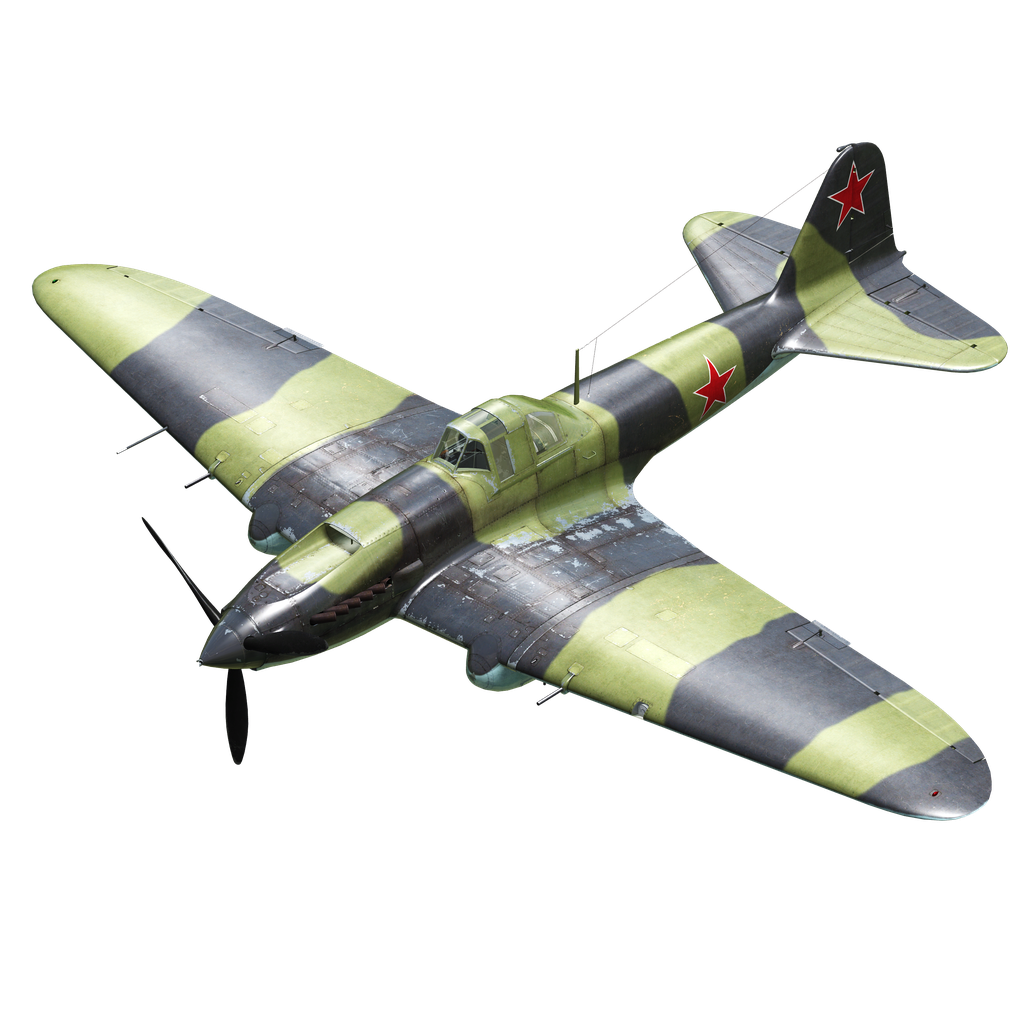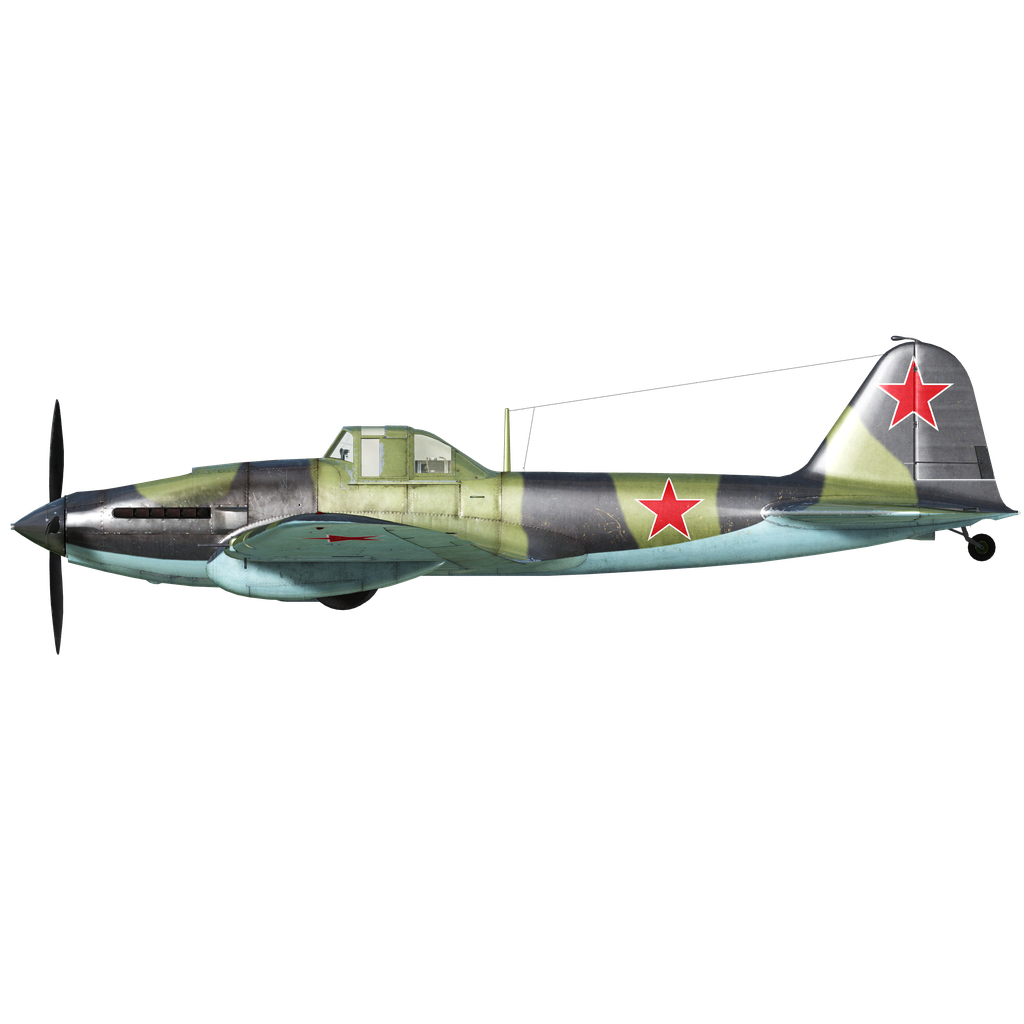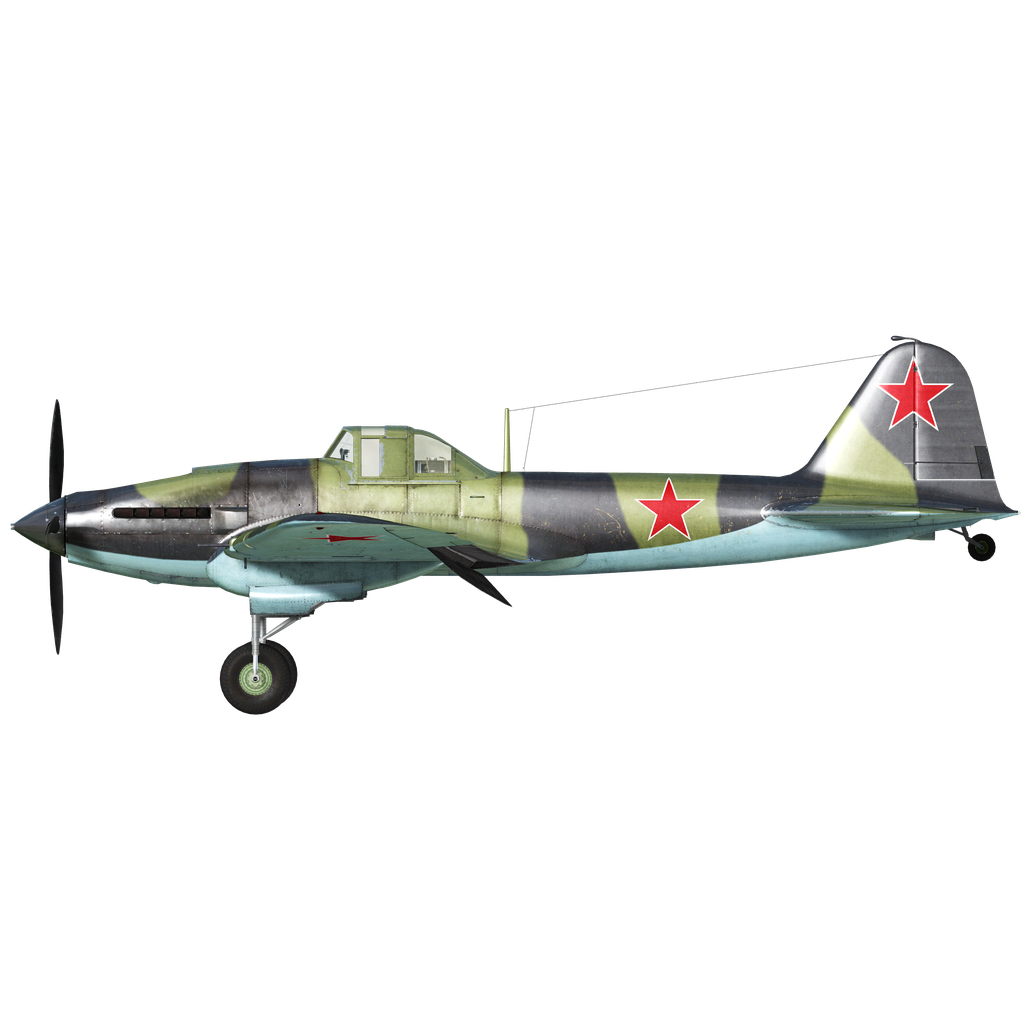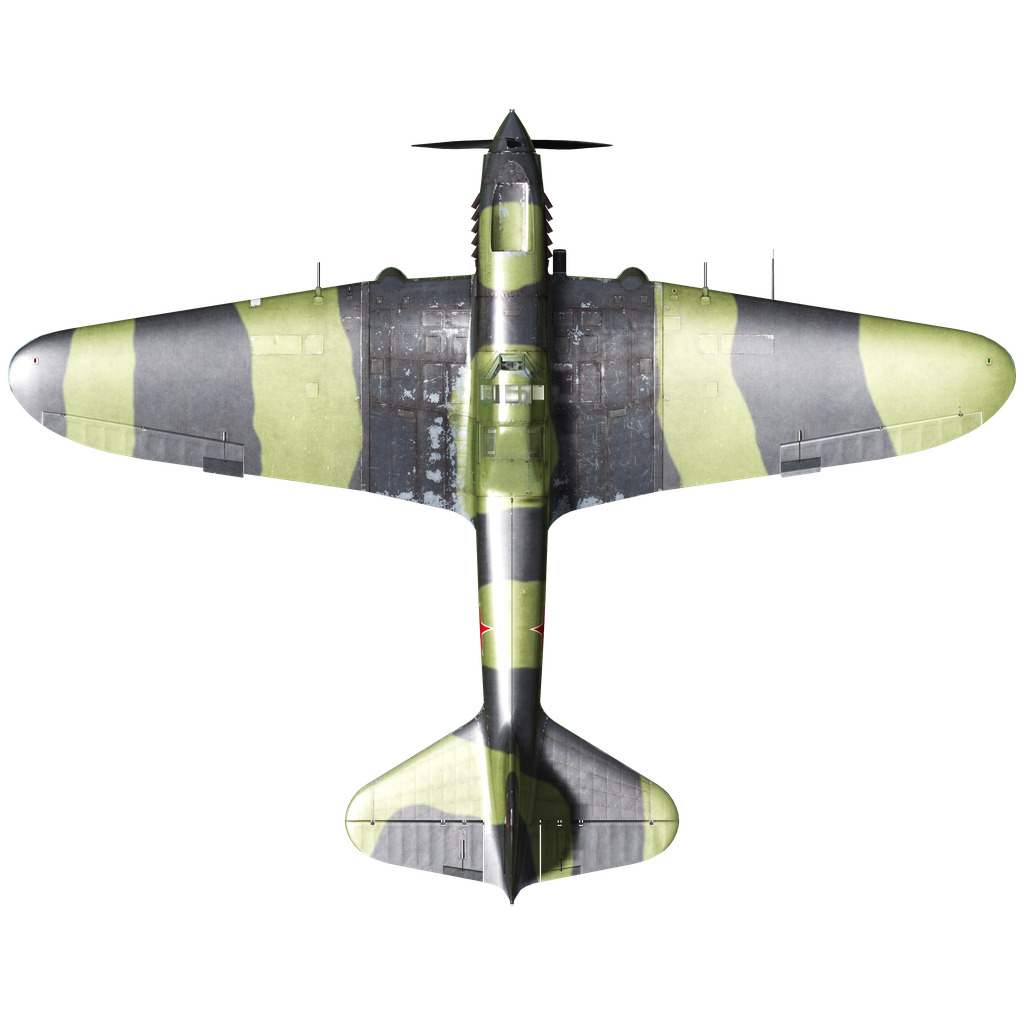Developed by S.V. Ilyushin, the Il-2 attack plane became the main attack aircraft of Soviet aviation during the Great Patriotic War and at the same time the most-produced combat aircraft in the world.
The first flight of the two-seat BSh-2 (TsKB-55) armored attack aircraft took place in 1939, but even after modifications the aircraft did not meet the requirements of the technical specifications: it did not develop the required maximum speed and had an insufficient flight range. Therefore, the engine of the AM-35 high-altitude fighter was replaced by a specially designed AM-38 engine, the aircraft was converted into a single-seat version, the fuselage was lengthened, the canopy was changed, the armor on the rear hemisphere was reinforced, and an additional fuel tank was installed. The new aircraft, with the designation TsKB-57, took off for the first time on October 12, 1940, and went into mass production in March 1941.
In the early days of the war, it became clear that single-seat attack aircraft were suffering unreasonably high losses to enemy fighters, but there were strict orders not to slow down the rate of production of attack aircraft, which would of course have resulted from the introduction of a new two-seat modification into production.
The Il-2 circa. 1942 was a single-seat, single-engine, low-wing aircraft of mixed construction, with retractable landing gear and a tail wheel. The pilot, engine, and fuel tanks were protected by a 4-8 mm armored hull. The wing and rear fuselage were attached to the armored hull, the strongest element of the airframe. The wings and rear fuselage were made of multi-layered plywood, as the aircraft industry did not have enough duralumin. In the 1942 version, the pilot's head protection was increased by the installation of additional upper canopy armor.
The armament of the plane did not change and consisted of two 20 or 23 mm cannons and 2 machine guns, but the cannons in the wing were relocated to the far side of the consoles and the machine guns were located closest to the fuselage. The 1942 model still had no defensive weapons. In addition to small arms and cannons, the aircraft could carry up to 8 unguided rockets or up to 600 kg of bombs. Instead of a gunsight, a Vasiliev BB-1 sight was used, which consisted of a reticle on armored glass and a front sight on a pin mounted on the engine cowling. For bombing from horizontal flight, there were special markings on the cowl and on the armored glass — by combining the markings, the pilot could approximately determine the moment of bomb release.
The engine was a water-cooled AM-38 with a variable-pitch propeller. The engine intake manifold was located on the left side of the fuselage. As it turned out during operation, it ingested a large amount of dust along with the air, which greatly reduced the life of the engine, so in 1942 a TsAGI-type air dust filter was fitted to it.
In the defensive and offensive battles of 1942, the Il-2 was widely used in direct support of ground forces and even against enemy bombers. The most effective anti-tank weapons in the early part of the war were capsules of white phosphorus dropped en masse on columns of tanks. However, phosphorus proved to be very "capricious" in terms of humidity, temperature, and wind, which limited its use. The least effective means of destroying enemy armored vehicles in the early stages of the war were aerial bombs and cannons. At the same time, in 50% of the missions, the aircraft suffered combat damage — there were cases when the aircraft returned from a combat mission with more than 500 holes in the wing and fuselage. After repairs by field workshops, the planes were returned to service.
Single-seat versions continued to be converted into two-seat versions in frontline formations to reduce the losses from enemy fighters.
1. E. Chernikov “Armored attack aircraft Il-2” M-Hobby 1998
2. V. Perov, O. Rastrenin “Il-2 Sturmovik”, Aviation and Cosmonautics magazine No. 5-6 2001
3. Materials from the site airwar.ru






